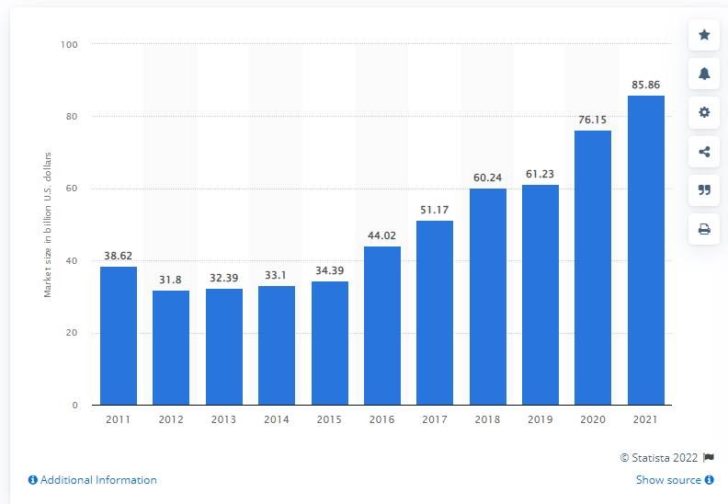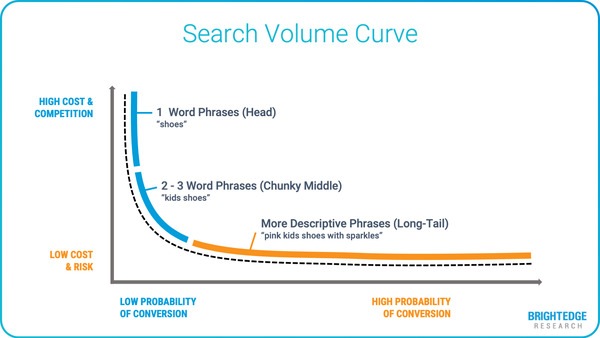
30-second summary:
- SEO is vastly underutilized in the content creation industry
- How can internet marketing lead to success in Esports and gaming?
- Anthony DiMoro discusses the needed innovation during the content, gaming, and web3 boom
Despite a strong track record and success model within the digital marketing world, for multiple decades, SEO still finds itself almost entirely abandoned in the new age markets of content creation, Esports, gaming, and web3 related properties.
But, why is that? Why would businesses, brands, and creators operating in these spaces, reliant on success in a digital marketplace completely ignore SEO?
Let’s explore why, and how things need to change as 2022 continues to show that the boom of these is not slowing down, but is also rapidly evolving.
1. Content creation and streaming
There is no rhyme or reason as to why content creators (which includes streamers) fail to utilize SEO, considering the fact that their entire brand relies on success within the digital marketplace.
Instead, creators seem to often lean into the following troubling trends, and solely rely on these recycled methods:
Automation and inauthenticity
There is no social platform that has not experienced, in some form or fashion, a form of automation. But content creators, particularly in the streaming sector (like Twitch and YouTube) use this to the point of “overkill”.
“Going LIVE” posts flood timelines, and when they are the majority of what a particular creator posts, it flatlines engagement. While it may seem like a “bot”, it actually is more a real strategy for creators. While informing your audience that you are going live is important, it shouldn’t be or appear, inauthentically posted or automated.
Going further down the rabbit hole will see a more aggressive form of automation in DMs and messages. DMing a new follower or connection is a solid tool for networking when done organically, but the second a bot steps into the chat, your chances skyrocket of someone not only disregarding your content completely but also unfollowing you altogether.
Authenticity is key in proper brand building, especially when you’re being looked at by a potential business or collaborative opportunity.
If you’re heavy into automation and inauthenticity, why would a brand or business spend money on your content or brand? They would, rightfully, assume that is how you do business.
Farming and cycling (aka Botting)
Every few years a new app or platform pops up promising to help creators and streamers reach milestones of affiliate or partner, but are, more often than not, simply a recycling of hacky, spammy, models
Follow for Follow systems have plagued the niche, and have fueled an even more robust “sub for sub” system, but not view churning. This is becoming a more prevalent issue.
Cycling content clips and/or highlights can be an engagement factor for a feed and can help keep your audience engaged, but when in a collective of other cycles, coupled with any incentivizing to push engagement is something completely different.
Some of these models try to divert away from appearing to be a clear violation of, for example, Twitch’s Terms of Services, but it’s all a mirage.
Take it right from Twitch’s TOS page:
“Fake engagement is artificial inflation of channel statistics, such as views or follows, through coordination or 3rd party tools. This behavior is characterized by the creation of incidental or duplicitous views or follows. One common form of this activity is often referred to as view-botting. Another, when done in a coordinated manner, is sometimes identified as “Follow 4 Follow” (F4F), “Lurk 4 Lurk” (L4L), or Host 4 Host (H4H), which involve a mutual exchange of interaction intended to increase the visibility of both channels over those with legitimate interaction. Using services that promise higher visibility in exchange for lurking in a large number of channels or viewing streams on pages with several unrelated, active embedded streams, is considered a form of fake engagement and is not permitted on Twitch services.”
Does the app or platform you use have instances where members are motivated to pop into someone’s channel to say “hello, I am here from PLATFORMNAME” and then leave? Are you a part of a system where videos are cycled to generate views and inject this behavior?
Then you may be, in essence, engaging in a form of view botting, albeit a more human version, and also engaging in fake engagement.
Let’s look further into how Twitch defines these things:
“Artificial engagement and botting limit growth opportunities for legitimate broadcasters and are damaging to the community as a whole. False viewer growth is not conducive to establishing a career in broadcasting because the ‘viewers’ do not contribute to a healthy, highly engaged community.
As a reminder, fake engagement and artificial inflation of channel statistics are violations of our policies. Participating in, organizing, and/or running these services will lead to an enforcement issued on your account, including and up to indefinite suspension”
Why run the risk? Furthermore, why try to “game” or “cheat” the system to inorganically generate some form of success?
Sure, it can be a good confidence booster, but you’re looking to monetize this, or even make it a career, rather than protecting your analytics and ensuring they are transparent is key, and could make or break a financially rewarding opportunity or deal with a business who will, assuredly, do their due diligence.
Community toxicity
One big issue in the industry, overall, is toxicity and how many creators and viewers engage in this at varying levels. But to take things further, many communities and platforms fuel this behavior or lead the charge.
Association is key, and if you’re aligned or using a service or platform, ensure how they interact, specifically when criticized, aligns with your brand and is something you would not mind a potential business partner or collaborative partner seeing.
Whether a member of the community leaves or someone reports an unsuccessful experience, a brand’s reaction and the behavior/conduct of their prominent members/admins speak volumes in the world of business.
The solution
Explore more viable outlets, look for services more rooted in things such as SEO and internet marketing, and lean into those service offerings and/or benefits.
There is a reason why influencer marketing and even things as minute as Twitch SEO are gaining impressive traction.
Because, with effort and a professional, dedicated, and intuitive approach, businesses can work in areas that really matter. They can take you outside of the box that a platform’s discoverability model may keep you contained in. It can make you more appealing to businesses.
Explore and re-invent the way you do business. If you’re investing hard-earned money into your equipment and also pouring hours into creating, you owe it to yourself to be efficient with your branding and marketing.
2. Esports
The Esports boom is not slowing down and you can expect the industry to expand further as there is considerable buzz around the college Esports industry in 2022.
The projected boom shouldn’t come as a shock, in fact, it was projected back in 2019 when a report from Estreme Networks and eCampus News “which surveyed 281 technical and administrative leaders across K-12 and higher education in North America, Latin America, Asia Pacific, Europe, and the Middle East, found that –
- one in five schools already have an esports program
- 71 percent were considering or might consider adding an esports program in the future
Fast Forward to 2021, and the State University of New York (SUNY) reported that 2,077 students enrolled in a SUNY esports program in the 2021 fall semester, compared to 636 students that enrolled in the 2020 fall semester, and those numbers are going to grow in 2022.
This creates a more competitive marketplace driven by greater revenue opportunities, meaning that Esports teams, players, casters, and businesses need to gain an edge to keep up and scale.
So, where does that come from? Esports SEO.Let’s backtrack to my article back in August 2021 and what eUnited’ Matt Pothoff said regarding the importance of SEO:
“eUnited does use elements such as SEO to increase visibility when selling merchandise or showcasing new sponsors. Additionally, we help players revise their stream titles and descriptions for better chances of obtaining new viewership when users are searching for different topics on Twitch”
Now, let’s circle back to the here and now, and an interview I did on Gamactica Portals with Christian Bishop, Director of Twitch Properties:
“SEO and working through the Google machine is incredibly important,” Bishop said.
“This can very much make or break the success of a website or piece of content. Investing in SEO has been one of the most fruitful and rewarding decisions I have made with my media companies. I would love to see creators do more around SEO to drive traffic to their channels and content.
Discoverability and growth can be hard for a lot of creators, SEO might be one of the angles to break through.”
The fact is, internet marketing and SEO are proving to be differentiators in many layers of the industry, including esports, and making it a huge part of the foundation of your team, career, or your organization is more vital than ever.”
There is no denying this need within the esports landscape yet it remains vastly unutilized by many organizations and teams.
3. Video games (Developers and publishers)
Regardless if you’re a big named studio, an indie team, or a solo developer, video game SEO should be a big part of your strategy, because the industry is seeing a rapid YoY increase in revenue flow.
Take this infographic from Statista, demonstrating the market size (in US dollars, billions) from 2010 to 2021 and it speaks for itself.

The influx of revenue means that it demands a more competitive and fluid marketing approach that reaches an exact target market. Given the number of game genres and considering that markets aren’t always the same, you cannot always approach it broadly. For instance, fans of Animal Crossing may not like your FPS game.
4. The new markets of web3, cryptocurrency, and NFTs
Regardless of where you stand on cryptocurrency or the controversial Non-Fungible Token (NFT), they aren’t going anywhere. If you operate in the gaming and streaming industries they are likely already operating in your space.
So, you can choose to disassociate them completely from your brand or be open to working with businesses that operate with them. Regardless of where you lean, you should understand the niches and network with the brands and names within them – they will, more often than not, overlap in your niche.
Marketing will likely do the same and you have probably already seen it exist, in some fashion, in your favorite game, or on a platform you use (such as Twitter), and with the birth of NFT SEO and Crypto SEO, these sectors are going to be pushing even more efforts into penetrating your market space.
Business owners in these spaces will need to rely more on these methods, as a shiny, new-age-looking website will only take you so far.
The importance of marketing and targeted networking will only continue to scale upwards, and those who either don’t use it or refuse to use it all together will either be making their track to success or a much more difficult path.
Anthony DiMoro is CEO of Gamactica. He can be found on Twitter @AnthonyDiMoro.
Subscribe to the Search Engine Watch newsletter for insights on SEO, the search landscape, search marketing, digital marketing, leadership, podcasts, and more.
Join the conversation with us on LinkedIn and Twitter.









